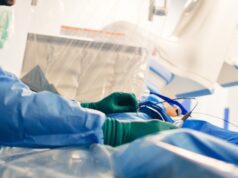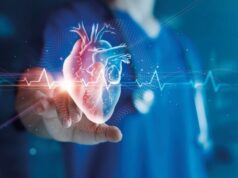The American Heart Journal reported on 21 December 2010 results of a clinical trial evaluating AMR-001 (Amorcyte) for the treatment of damaged heart muscle following acute myocardial infarction. Data demonstrated a significant relationship between cell dose and biologic effect.
This is the first and only study to prospectively define a dose of a purified and potent autologous stem cell therapy that resulted in a significant improvement in perfusion, a trend towards improved cardiac function and the potential to reduce subsequent adverse cardiac events following acute myocardial infarction.
The report was authored by researchers from Emory University, Northwestern University, Texas Heart Institute, The Christ Hospital Heart and Vascular Center in Cincinnati, Ohio, Mayo Clinic College of Medicine, Amorcyte and Progenitor Cell Therapy.
The 31 patients in the phase I trial were randomly assigned to an autologous stem cell harvest group (cells were harvested from the patient’s own bone marrow) or control group five days after an ST elevation myocardial infarction (STEMI) characterised by a prolonged period of hypoperfusion. CD34+ cells having CXCR-4+ receptors were then isolated from the bone marrow, and enriched to increase potency using Amorcyte’s patented technology into five, 10 and 15 million cell doses. The cells were infused into the patient via the infarct-related artery seven to 11 days following the STEMI – the optimal time frame to attempt to prevent adverse ventricular remodeling. Caused by the progressive decline in heart muscle function following an acute myocardial infarction, ventricular remodeling can lead to permanent heart damage and increase the risk of recurrent heart attack, other adverse cardiac events and death.
The study results demonstrated that patients receiving 10 to 15 million cells (n=9) experienced significant improvement in resting perfusion rates at six months as compared to patients receiving 5 million cells (n=6) and control (n=15), as measured by the SPECT total severity score, (-256 versus +13, p=0.01). Furthermore, patients receiving 10 or more million cells showed a trend towards improvement in ejection fraction, the percentage of blood pumped out of a ventricle with each heartbeat, (+4% versus +1%); end systolic volume (-5.7mL versus -0.1mL); and infarct size, tissue death due to loss of adequate blood supply, (-10% versus -3%) at six month follow-up.
“AMR-001 showed the potential for a patient’s own stem cells to reduce serious long-term complications from a heart attack,” said Arshed Quyyumi, professor of Medicine, Division of Cardiology, at Emory University School of Medicine and the trial’s principal investigator and co-author of the report. “This novel therapy may help severe heart attack patients, who are at the most risk for further downstream events. I look forward to further investigation of AMR-001 and its potential benefits in the care of heart attack patients.”













